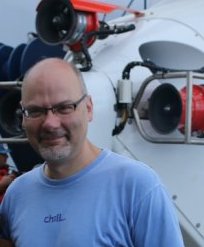Traducción al español a continuación
The first thing that one notices when approaching the deep-sea hydrothermal vents at 9ºN on the East Pacific Rise is the lush and beautiful animal communities featured by the giant tubeworm Riftia pachyptila, pointing to the high productivity of this ecosystem that rivals that of the tropical rainforest. Yet what lies on the surface of the vents is only half of the story- the other half lies hidden beneath the seafloor.
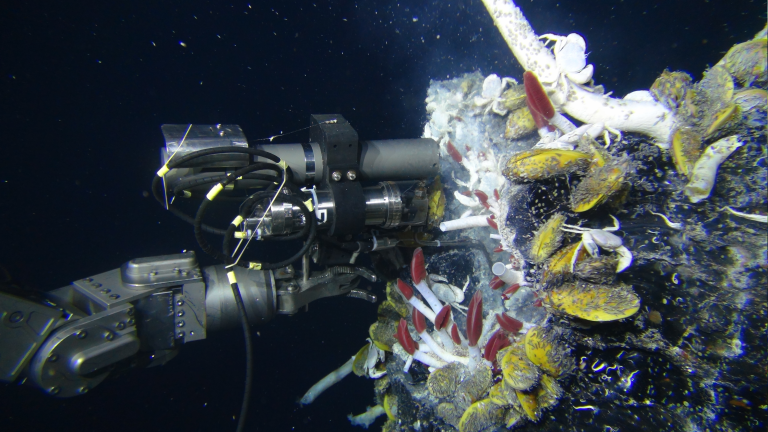
When deep-sea hydrothermal vents were discovered for the first time at the Galapagos Spreading Center in 1977, scientists were awed by the newly discovered life forms on the seafloor. They also pointed out that microbial life likely exists below the seafloor, flourishing in the cracks and crevices of the porous basaltic rocks that make up the upper ocean crust. These crevices are also where the hot hydrothermal fluids and cold seawater mix, supplying the necessary ingredients for chemosynthetic microbes. Microbes use chemical energy rather than light, as plants and algae do, to convert CO2 into biomass, and as such, are at the base of the food chain at deep-sea vents, just like plants on land or algae in the surface ocean. 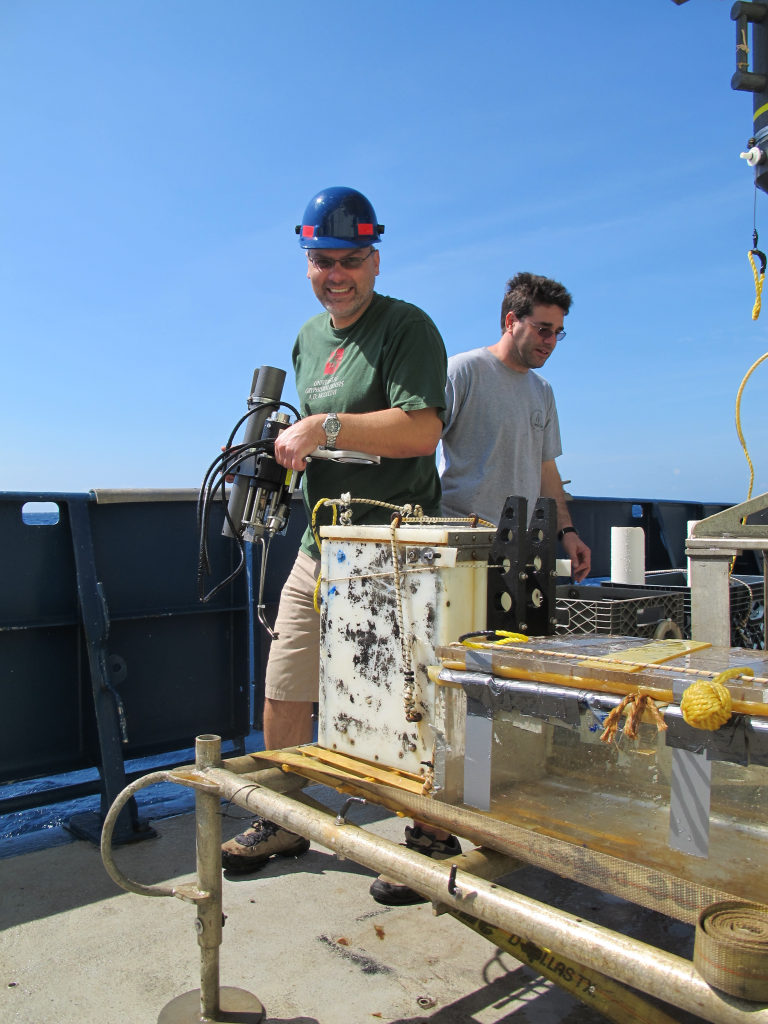
Over the years, evidence for the existence of this subseafloor biosphere has accumulated and it is well established by now. However, the answer to the question of how productive these microbes are and how this compares to the productivity above the seafloor has eluded scientists for a long time. Ever since I had an opportunity to conduct my own studies at deep-sea vents as a scientist at Woods Hole Oceanographic Institution, my research has been driven to make headway on answering this question and to make measurements that would allow us to put these ecosystems in a more quantitative framework. Not just determining who is there but also identifying the functions of the microbes and measuring their activities.
This goes back all the way to my time as a student when I had a chance to spend a formative year at the University of Washington in Seattle in the lab of John Baross, a pioneer of deep-sea vent microbiology and someone who shaped the idea of the existence of a subseafloor biosphere at deep-sea vents. For my research, I have been a frequent visitor of the vent field at 9ºN on the East Pacific Rise over the last 20+ years. On a research cruise in 2007, one year after a volcanic eruption had wiped out all signs of life- at least that of animals- we came across a vent site and named it Crab Spa. The name seemed fitting as we observed a bunch of crabs going in and out of the warm vent, which sits in the vastness of the cold deep sea. Since then, we have visited this site quite frequently, and it has served as the perfect entry point to collect subseafloor fluids to characterize the subseafloor biosphere.
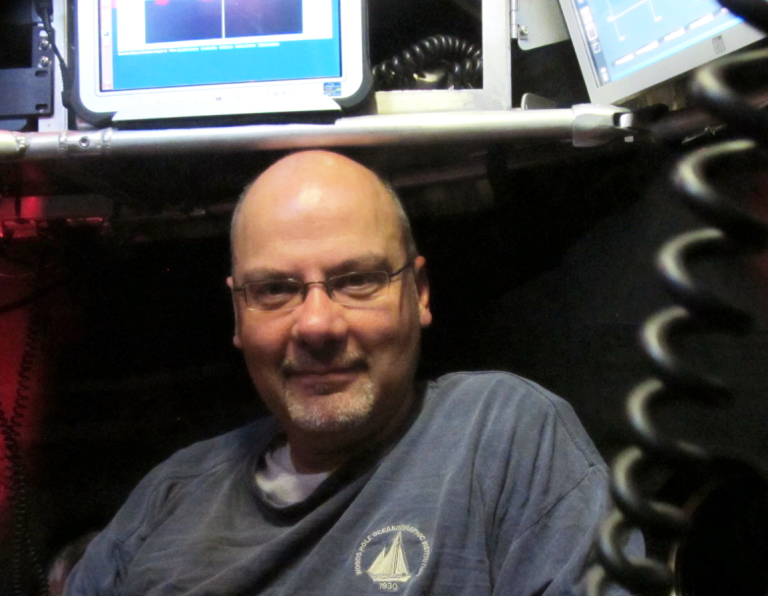
During one of our expeditions, we mounted a major effort to measure the productivity of this subseafloor biosphere, which was spearheaded by Jesse McNichol, a Ph.D. student in the MIT-WHOI Joint Program working in my lab between myself, and Jeff Seewald. This work involved using so-called isobaric-gastight samplers, or IGTs, which allowed us to collect fluids and bring them to the ship while maintaining the pressure. In the shipboard lab, incubations were set up at the pressure and temperature of Crab Spa to measure the rates at which the microbes consumed specific chemicals and how efficiently they converted them into biomass, a critical parameter to determine the productivity of the subseafloor biosphere. We found that the microbes were very active, and their productivity was the same as that of the productive animal communities, including Riftia pachyptila, above the seafloor. This means that the subseafloor biosphere contributes half of the productivity occurring at this vent site and probably across the vent field.
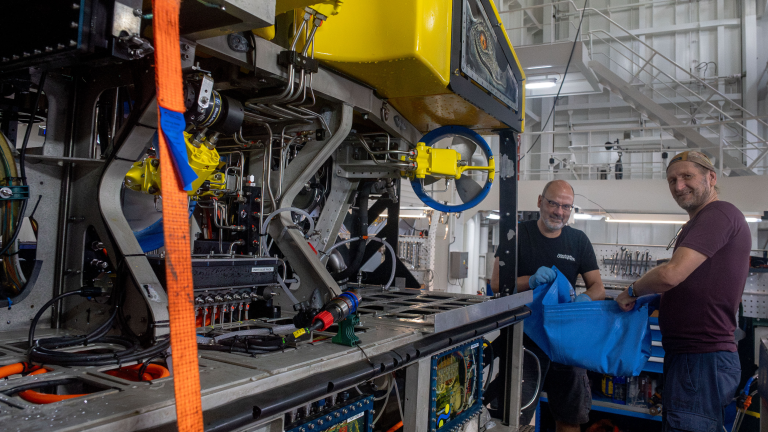
On this cruise on Falkor (too), I characterize the microbial communities in the different habitats we sample, including the subseafloor. I am very excited to be part of this team to test the groundbreaking hypothesis that the subseafloor biosphere contains more than just microbes. I also can’t wait to return to Crab Spa to continue our time series.
La vida en las grietas y hendiduras de la corteza
Lo primero que llama la atención cuando uno se acerca a las fuentes hidrotermales de aguas profundas situadas a 9º N en la Dorsal del Pacífico Oriental son las exuberantes y hermosas comunidades animales protagonizadas por el gusano tubícola gigante Riftia pachyptila, que apuntan a la alta productividad de este ecosistema que rivaliza con la de la selva tropical. Sin embargo, lo que hay en la superficie de los respiraderos es sólo la mitad de la historia: la otra mitad está oculta bajo el lecho marino.
Cuando en 1977 se descubrieron por primera vez las fuentes hidrotermales de aguas profundas en el Centro de Propagación de Galápagos, los científicos quedaron asombrados por las formas de vida recién descubiertas en el fondo marino. También señalaron que es probable que exista vida microbiana bajo el lecho marino, floreciendo en las grietas y hendiduras de las rocas basálticas porosas que componen la corteza superior del océano. Estas grietas son también el lugar donde se mezclan los fluidos hidrotermales calientes y el agua de mar fría, proporcionando los ingredientes necesarios para los microbios quimiosintéticos. Los microbios utilizan la energía química en lugar de la luz, como las plantas y las algas, para convertir el CO2 en biomasa y, como tales, se encuentran en la base de la cadena alimentaria en los respiraderos de aguas profundas, al igual que las plantas en tierra o las algas en el océano superficial.
A lo largo de los años, se han ido acumulando pruebas de la existencia de esta biosfera del subsuelo marino, que ya está bien establecida. Sin embargo, la respuesta a la pregunta de cuán productivos son estos microbios y cómo se compara esto con la productividad sobre el lecho marino ha eludido a los científicos durante mucho tiempo. Desde que tuve la oportunidad de realizar mis propios estudios en respiraderos de aguas profundas como científico de la Institución Oceanográfica Woods Hole, mi investigación se ha visto impulsada a avanzar en la respuesta a esta pregunta y a realizar mediciones que nos permitan situar estos ecosistemas en un marco más cuantitativo. No sólo determinar quién está allí, sino también identificar las funciones de los microbios y medir sus actividades.
Esto se remonta a mi época de estudiante, cuando tuve la oportunidad de pasar un año de formación en la Universidad de Washington en Seattle, en el laboratorio de John Baross, un pionero de la microbiología de los respiraderos marinos y alguien que dio forma a la idea de la existencia de una biosfera en el subsuelo de los respiraderos marinos. Para mi investigación, he visitado con frecuencia el campo de respiraderos situado a 9ºN en la Dorsal del Pacífico Oriental durante los últimos 20 años. En un crucero de investigación en 2007, un año después de una erupción volcánica que había eliminado todos los signos de vida -al menos de animales- nos encontramos con un respiradero que llamamos Crab Spa. El nombre nos pareció apropiado, ya que observamos un montón de cangrejos que entraban y salían del cálido respiradero, situado en la inmensidad de las frías profundidades marinas. Desde entonces, hemos visitado este lugar con bastante frecuencia, y ha servido como punto de entrada perfecto para recoger fluidos del subsuelo con el fin de caracterizar la biosfera del subsuelo.
Durante una de nuestras expediciones, realizamos un gran esfuerzo para medir la productividad de esta biosfera del subsuelo marino, encabezado por Jesse McNichol, un estudiante de doctorado del Programa Conjunto MIT-WHOI que trabaja en mi laboratorio junto conmigo y con Jeff Seewald. En este trabajo se utilizaron los llamados muestreadores isobáricos estancos, o IGT, que nos permitían recoger fluidos y llevarlos al barco manteniendo la presión. En el laboratorio de a bordo, las incubaciones se realizaron a la presión y temperatura de Crab Spa para medir las tasas a las que los microbios consumían sustancias químicas específicas y la eficacia con la que las convertían en biomasa, un parámetro crítico para determinar la productividad de la biosfera del subsuelo marino. Comprobamos que los microbios eran muy activos y que su productividad era la misma que la de las comunidades animales productivas, incluida la Riftia pachyptila, situadas sobre el lecho marino. Esto significa que la biosfera del subsuelo contribuye a la mitad de la productividad que tiene lugar en este respiradero y probablemente en todo el campo de respiraderos.
En este crucero en Falkor (too), caracterizo a las comunidades microbianas en los diferentes hábitats que muestreamos, incluido el subsuelo. Me entusiasma formar parte de este equipo para poner a prueba la innovadora hipótesis de que la biosfera del subsuelo contiene algo más que microbios. También estoy impaciente por volver a Crab Spa para continuar nuestra serie temporal.
